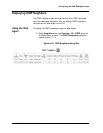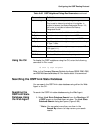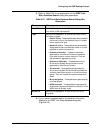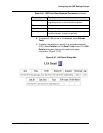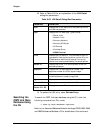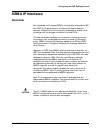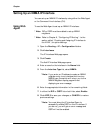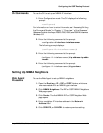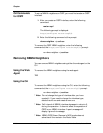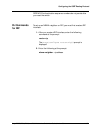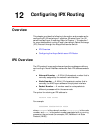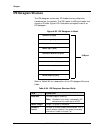
Avaya P550R, P580, P880, and P882 Multiservice Switch User Guide, Version 5.3.1 11-33
Configuring the OSPF Routing Protocol
NBMA IP Interfaces
Overview
Non-broadcast multi-access (NBMA) functionality was added to RIP
and OSPF routing protocols on the Avaya Multiservice switch
software. Support for this functionality was added to enable route
exchange over nonbridged connections (routed PVCs).
This feature makes it possible for the switch to exchange routing
information over nonbridged connections (routed virtual switch
ports). NBMA functionality has been added to the RIP and OSPF
routing protocols in the switch software and has been tested with
other routers.
Operation of OSPF over NBMA is almost identical to operation of
OSPF over broadcast LANs. Flooding uses the designated router, and
both subnets are represented identically within the OSPF link-state
database by network-LSAs. The only real difference between
broadcast subnets and NBMA subnets is in the discovery of
neighboring routers. On broadcast networks, a router can discover
its neighbors dynamically by sending multicast Hello packets; on
NBMA networks, a router's neighbors may have to be
configured.This feature makes it possible for you to set up an IP
interface as NBMA. Each IP routing protocol may then have IP
addresses that are designated as NBMA neighbors.
Each IP routing protocol may then have IP addresses that are
designated as NBMA neighbors. This allows the switch to work with
other routers that are routed over PVCs.
CAUTION
The 5.3.1 NBMA feature is not backward compatible. If you have
NBMA interfaces set up and need to downgrade from v5.3.1 to a 5.2
version of software, contact technical support.



